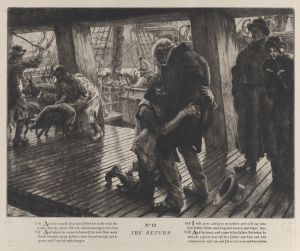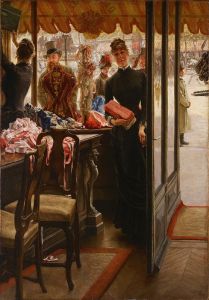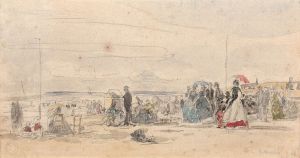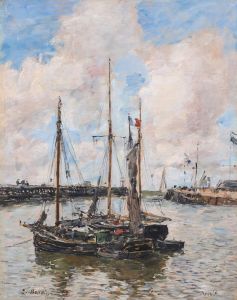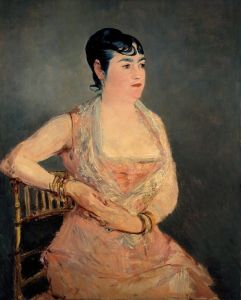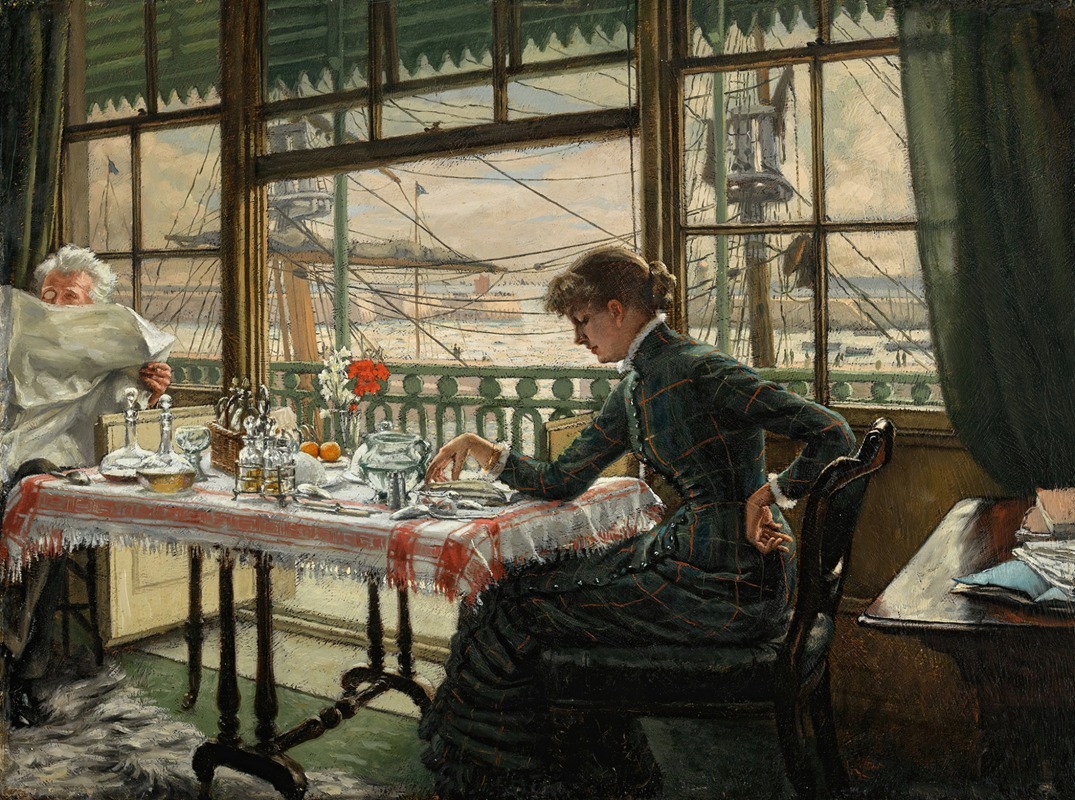
Room Overlooking the Harbour
A hand-painted replica of James Tissot’s masterpiece Room Overlooking the Harbour, meticulously crafted by professional artists to capture the true essence of the original. Each piece is created with museum-quality canvas and rare mineral pigments, carefully painted by experienced artists with delicate brushstrokes and rich, layered colors to perfectly recreate the texture of the original artwork. Unlike machine-printed reproductions, this hand-painted version brings the painting to life, infused with the artist’s emotions and skill in every stroke. Whether for personal collection or home decoration, it instantly elevates the artistic atmosphere of any space.
"Room Overlooking the Harbour" is a painting by the French artist James Tissot, known for his detailed and vibrant depictions of contemporary life in the late 19th century. Tissot, born Jacques Joseph Tissot on October 15, 1836, in Nantes, France, was a prominent figure in both French and British art circles. He is celebrated for his ability to capture the nuances of fashion, society, and the intimate moments of domestic life.
The painting "Room Overlooking the Harbour" exemplifies Tissot's keen interest in the interplay between interior and exterior spaces, a recurring theme in his work. Although specific details about the painting's creation, such as the exact year it was painted, are not widely documented, it is consistent with Tissot's style during his mature period, which often featured elegant interiors with views of bustling urban or maritime scenes.
Tissot's work is characterized by meticulous attention to detail, and "Room Overlooking the Harbour" is no exception. The painting likely depicts a well-appointed room, possibly in a fashionable urban setting, with a window or balcony offering a view of a harbor. This setting allows Tissot to explore the contrast between the serene, ordered interior space and the dynamic, ever-changing world outside. The harbor view would typically include ships, water, and possibly figures engaged in maritime activities, reflecting Tissot's interest in modernity and the global connections of his time.
The figures in Tissot's paintings are often depicted in contemporary dress, providing a snapshot of the fashion and social customs of the era. His works frequently feature women in elegant attire, highlighting the changing roles and perceptions of women in society during the late 19th century. The interplay of light and shadow, along with the rich textures of fabrics and furnishings, are hallmarks of Tissot's style, creating a sense of realism and immediacy.
James Tissot's career was marked by his move to London in 1871, where he became a successful society painter. His works from this period often reflect the influence of British culture and the Victorian fascination with domesticity and social rituals. Tissot's ability to capture the subtleties of human interaction and the beauty of everyday life earned him a significant following among art collectors and the public.
"Room Overlooking the Harbour" fits within Tissot's broader oeuvre, which includes a series of paintings exploring themes of love, leisure, and the complexities of modern life. His work remains highly regarded for its technical skill and its ability to convey the spirit of the age.
While specific exhibitions or collections featuring "Room Overlooking the Harbour" are not widely documented, Tissot's paintings are held in numerous prestigious institutions worldwide, including the Musée d'Orsay in Paris and the Tate Gallery in London. His legacy continues to be celebrated for its contribution to the understanding of 19th-century art and society.





